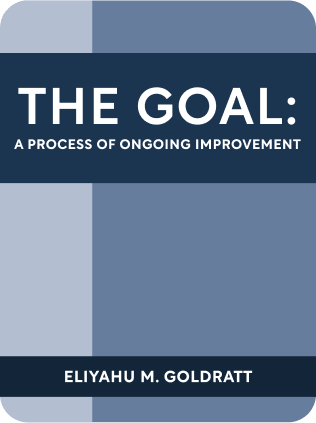

This article is an excerpt from the Shortform book guide to "The Goal: A Process of Ongoing Improvement" by Eliyahu M. Goldratt. Shortform has the world's best summaries and analyses of books you should be reading.
Like this article? Sign up for a free trial here .
What are the virtuous and vicious cycles in production? How do these cycles affect manufacturing?
Virtuous and vicious cycles are the natural chains that lead to various benefits and drawbacks. In manufacturing, they are self-reinforcing feedback loops that keep making things better or worse.
Keep reading to better understand virtuous and vicious cycles and what you can do.
Virtuous and Vicious Cycles
As the protagonist of the narrative finds, productive practices can lead to virtuous cycles and increased competitiveness.
By adopting lean manufacturing principles like bottleneck alleviation, small batches, and Drum-Buffer-Rope systems, a cascading series of benefits happens:
- You improve throughput, lower inventory costs, and limit traffic jams.
- This decreases turnaround times.
- This in turn reduces cost per product (by spreading fixed costs over more products).
- Which allows lower prices and increases sales.
- You can also respond faster to the market.
In contrast, Goldratt points out how poor practices can lead to aggravating policies that cause further problems. Focusing on cost-accounting and local efficiencies:
- Causes full activation of resources to prevent idling.
- This increases inventory and causes longer queues for parts.
- This causes a greater backlog and missed deadlines.
- This in turn prompts earlier release of starting material (a natural reaction), which increases work-in-progress inventory and aggravates the situation.
- Also, this prompts people to ask for more capacity and increase batch sizes (for the sake of efficiency), which further increases inventory, causes traffic jams requiring more management attention.
- All of these symptoms decrease sales.
Increase Capacity at the Bottleneck
The protagonist of The Goal book undergoes multiple iterations of increasing capacity as his bottleneck to increase overall throughput. Without detailing every struggle, in this book summary we’ll cover common causes of reduced capacity at bottlenecks, and fixes to increase capacity.
(Shortform note: This is a good point to consider your own work or life in this context, and to construct effective ways to relieve your personal bottlenecks.)
Misleading Accounting Disguises Progress
Measurements like financial accounting should induce the organization to do what’s good for itself. But as you improve throughput, traditional accounting measures may make your situation look worse than it really is.
Examples:
- Inventory is usually marked as assets, and reducing inventory will show up as a loss in assets.
- Drum-buffer-rope will cause idle time at non-bottlenecks, thus decreasing local efficiencies.
- Consuming surplus inventory (beyond that determined by drum-buffer-rope) will decrease local efficiencies.
- Decreasing batch sizes increases setup time and overhead, thus increasing apparent cost-per-part.
However, these are usually temporary adjustments. Remember, what really matters is the total throughput of the system – increase that, and you’ll be able to make more sales. Over time you’ll enjoy lower inventory costs and faster lead times, which improve topline sales. The financials will look healthier in the long-term.

———End of Preview———
Like what you just read? Read the rest of the world's best book summary and analysis of Eliyahu M. Goldratt's "The Goal: A Process of Ongoing Improvement" at Shortform .
Here's what you'll find in our full The Goal: A Process of Ongoing Improvement summary :
- How to increase your personal output
- How to increase your team's output
- Why obsessing over cost efficiency isn't going to help you with production






